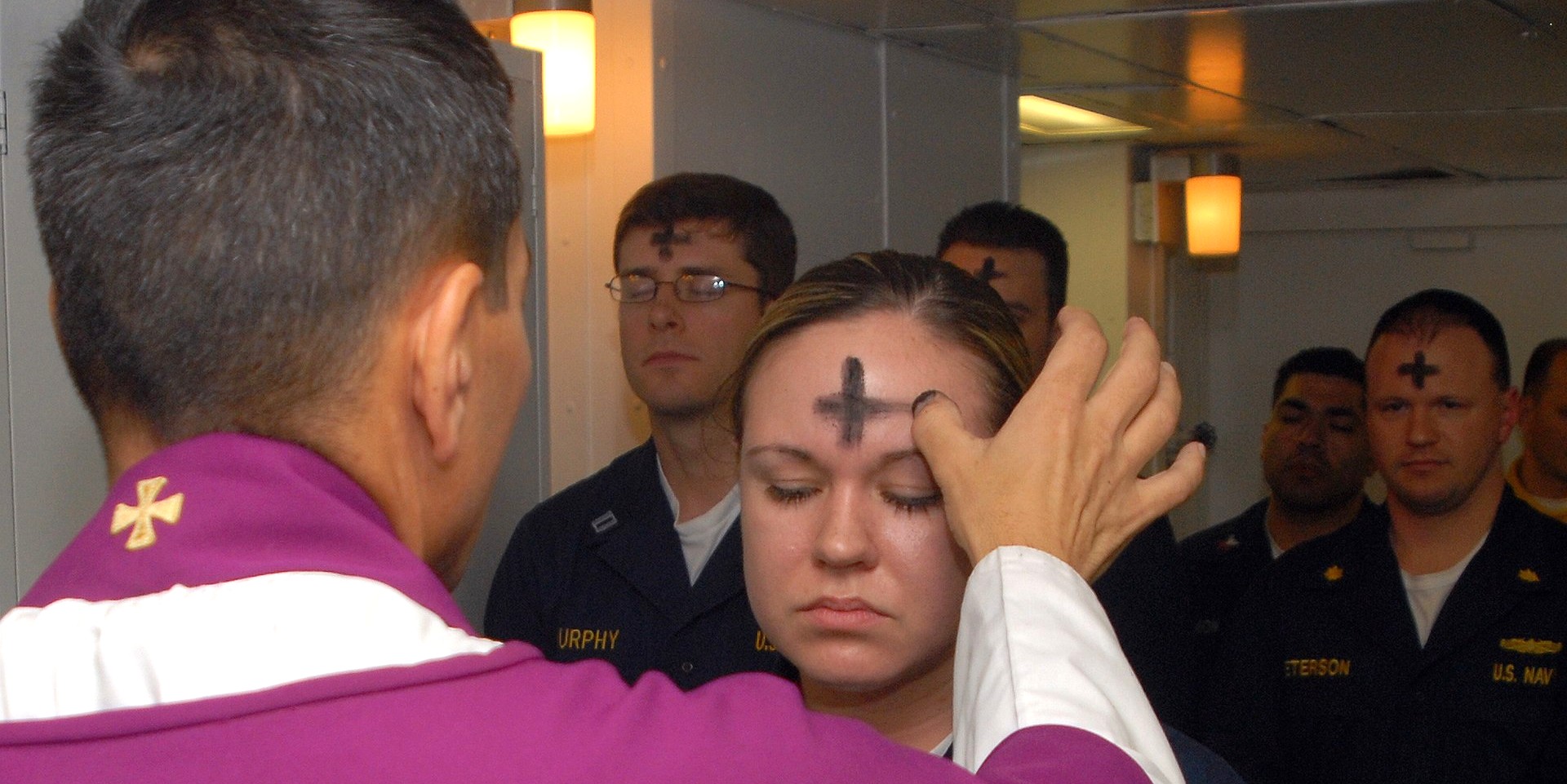The Season of Lent
National Liturgical Council

Lent is a preparation for the celebration of Easter. For the Lenten liturgy disposes both catechumens and the faithful to celebrate the Paschal Mystery: catechumens, through the several stages of Christian initiation; the faithful, through reminders of their own baptism and through penitential practices (GNLY 27).
The season of Lent runs from Ash Wednesday through to Holy Thursday. It is a time for the whole Church to focus anew on its baptismal call and to prepare for the renewal of the baptismal promises at Easter. Therefore on Ash Wednesday, through the imposition of ashes we are reminded to ‘turn away from sin and be faithful to the gospel’ or to remember that we are dust and to dust we will return. Traditionally the ashes come from burning the palms from the previous year. We are called to fast and abstain from meat on Ash Wednesday (and Good Friday). Throughout Lent we are urged to make more time for reflection on the gospel, prayer and helping others, especially through almsgiving. This latter practice often takes the form of donations to Project Compassion. While we are not obliged to fast, the practice has been a common way of emptying oneself for God to enter in, both in the Christian tradition, Judaism, Islam and other pagan religions.
Lent has its origins in the journey to the celebration of the Sacraments of Initiation at the Easter Vigil. In the early Church those wishing to become members of the Church community went through a long process. For the last six weeks of their preparation they had what could be called an extended retreat. This was time to reflect deeply on the Word of God so that their hearts and lives would be completely turned to the following of Christ, so that they would be totally converted. In recent years the Church has restored this Rite of Christian Initiation of Adults. Most Sundays during Lent there are special rituals after the homily. These call the Elect (the special name for those to be initiated) to deeper conversion through scrutinies; the creed and the Lord’s Prayer are also handed over to them as a sign of their impending belonging. The witness of the community accompanies these people on their journey
St Ambrose wrote that the Church ‘possesses both water and tears: the waters of baptism, the tears of penance’ (St Ambrose, Letter 41:12, cited in Introduction to Rite of Penance 2). While Lent began as preparation for the waters of baptism it is also traditionally associated with the celebration of the Sacrament of Penance. In the early tradition of the Church, those seeking reconciliation would place ashes on themselves as a sign of their desire for conversion. Today we are called to prepare ourselves for the renewal of our baptismal promises through the celebration of this sacrament preferably during Lent before the commencement of the Triduum.
The first preface of Lent refers to ‘this joyful season when we prepare to celebrate the Paschal Mystery with mind and heart renewed.’ Lent is a time for loving reverence to God and ‘willing service to our neighbour’ (Preface of Lent 1). The word alleluia is omitted and replaced with another Gospel Acclamation. In choosing music for this period it is wise to read all the verses to ensure that alleluia is not included. The Gloria is also omitted from the Introductory rites. This austerity of celebration extends to minimising floral decorations and a more muted style of music. This then makes the exuberance of the Easter season more evident to the assembly.
Purple clothes and vestments are used to focus our minds more clearly on the gospel. In the past the cross and all statues were also covered so that the focus would not be distracted by other devotions.
The Sunday cycle allows for the three yearly cycle of readings to continue. However, when the rites of Christian initiation of adults are being celebrated there is provision for the use of the Year A readings on the 3rd, 4th, 5th Sundays in keeping with ancient tradition. These gospel readings focus in a particular way on the themes of conversion and enlightenment proper to those seeking Christ for the first time.
The journey of Lent always begins with the reading of Jesus’ forty days in the desert where he was tempted by the devil. In Scripture, time in the desert always implies a searching for God, a time of encounter in which the person comes to a deeper relationship with God. Thus this reading sets the scene for Lent as a time of deepening relationship with God through prayer, fasting and almsgiving.
Holy Week has as its purpose the remembrance of Christ's passion, beginning with his Messianic entrance into Jerusalem (GNLY 31).
Holy week begins on Passion Sunday. On this day, commonly known as Palm Sunday, the liturgy begins with the Commemoration of the Lord’s Entrance into Jerusalem. This includes the Blessing of the Palms which the people take home. The highlight of the Liturgy of the Word is the proclamation of the Passion which takes us into the spirit of the coming week. The Preface names the salvation brought about in Christ through his suffering, death and rising through which ‘he has raised us up to holiness of life’ (Preface of Passion Sunday).
On Monday, Tuesday and Wednesday the prelude to the death of Jesus is stressed through the readings and prayers. On Holy Thursday all Masses are prohibited except the celebration of the Mass of the Chrism, although Communion of the Sick may be celebrated. For pastoral reasons this Mass may be celebrated at a more convenient time.
Image Attribution - US Naval personnel receive ashes on Ash Wednesday, Brian May
